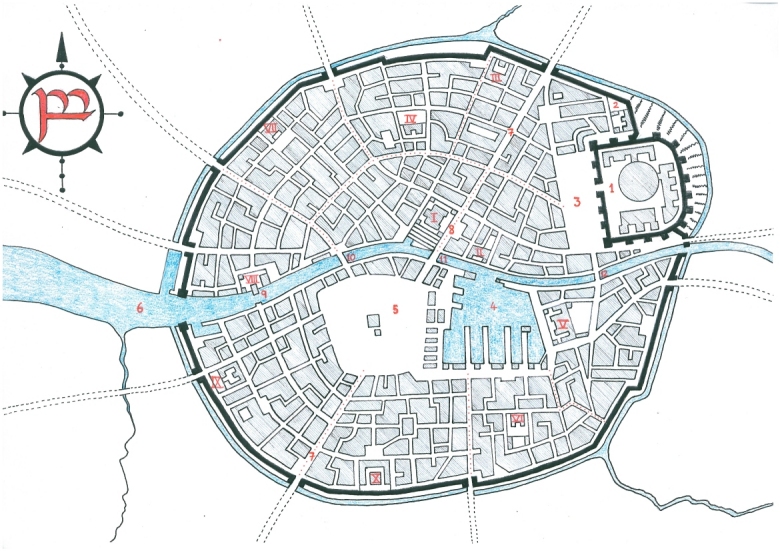About The Theft of Umbar - an RPG story

At the discussion board Minas Tirith (at http://www.minastirith.com) you can read the story of
The Theft of Umbar (at http://www.minastirith.com/ubb/ultimatebb.php?ubb=get_topic;f=11;t=000388).
It is written as a Role Playing Game, i.e. different writers write different parts of the story together, seeing it from different characters' point of view.
It is the story of a company of Elves and Men, complemented by a Dwarf, and led by Gandalf the Wizard, who are sent out by Elrond to find the Palantir of Osgiliath. This palantir is the Master Stone, and it was lost when Osgiliath fell. There are rumors - never referred to by Tolkien - that it has resurfaced and has been observed in Umbar.
What do we know about Umbar? Not a lot, which opens up a great opportunity for us as writers to fill in the details for ourselves. We know some of its history, which is recorded in the appendices of The Lord of the Rings, but we know a lot less about its geography.
So one of the Theft-writers, the signature Cernunnos, has given us his own concepts about the geography of Umbar, and has made a map of it. The smaller version of his map is given below, and we've also got a large version, a different enlargement of the same map. We even offer a pdf-file of his Key to the Plan of Umbar.
Key to the Plan of Umbar (minor streets and courtyards omitted)
Umbar was surrounded by an ancient and immensely strong wall, with towers and gates, first built by the Númenoreans in the Second Age and repaired many times since. It was further protected by a wide ditch, filled with water from diverted streams, and the Citadel, set on a rocky hill above the Bahar, and now taken up by the Great Temple. To complete the circle of defence, immense chains were stretched across the Barduin between the Guardian Towers where the river entered and exited The City, which could be raised to prevent ships from entering (it will be recalled that Pelargir was protected in the same way).
1. Temple of the Lord of the Dark, within the former Citadel.
2. Temple guesthouses.
3. Temple Square.
4. Great Harbour or Chief Haven, with numerous quays and warehouses.
5. Great Bazaar (guardhouse and auction hall in centre).
6. River Bahar or Barduin.
7. Grand Axis, broadest, straightest and most ancient street.
8. Former Royal Palace and Gardens (now headquarters of the First House).
Bridges:
9. King's Bridge (ruined).
10. Brothers' Bridge.
11. Old Bridge.
12. Seven Bowed Bridge.

The Ten Houses, their Chiefs and badges:
I - Zishâd 'Hard-Hand' (stylised face with curling moustaches).
II - Baron Melkomîr (red scorpion).
III - Kephâd 'the Wily' (crossed kesdars).
IV - 'Boss' Namâkh (horned skull impaled on a sword).
V - Lord Gimilbâr (the 'Brothers' Knot').
VI - Baron Khârion (entwined serpents).
VII - Adra 'the Ruthless' (fist holding a sheaf of arows).
VIII - Lord Kiblis (ship of war surmounted by a crown).
IX - 'Prince' Zâlkhis (golden trident).
X - Zaiblan 'the Black' (the 'Black hand').
The numbers assigned to the Houses do not imply their relative importance. They were merely the numbers of the Wards of The City they controlled, so labelled since ancient times. Thus the First House controlled the First Ward. This contained the ancient royal palace and the 'Double Throne' of Angamaitë and Sanghyando, but though the First used it as their headquarters, they did not claim descent from the former kings.
Back to the Tolkien page

Other graphics credited to aks.
|



